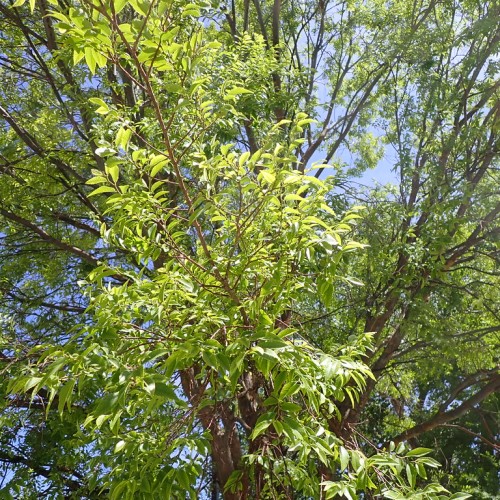
Chinese elm
Ulmus parvifolia
Cycle:
Perennial
Watering:
Average
Hardiness Zone:
4 - 9
Flowers:
Flowers
Sun:
Full sun
Leaf:
Yes
Growth Rate:
Low
Maintenance:
Moderate
Drought Tolerant:
Yes
Invasive:
Yes
Care Level:
Medium
watering
Chinese elm plants thrive best when watered deeply and thoroughly every 7-14 days. The frequency of watering will depend on the weather, soil type and location. In the warmer months, when the plant is actively growing, it may need to be watered more often. During the cooler months, the plant can be watered less frequently. When watering, it's important to saturate the soil so that the water reaches the roots. Water thoroughly until the soil is evenly moist and there is a little water draining from the bottom of the pot. Chinese elms are not prone to over-watering, but make sure not to water so much that the soil becomes soggy.
sunlight
Chinese elm (Ulmus Parvifolia) plants prefer bright, indirect light, with exposure to 3 to 6 hours of sunlight each day. To ensure optimal growth, they need to have some direct sunlight exposure in the morning or early afternoon to fuel photosynthesis, while the indirect light keeps their delicate leaves from scorching. It is important to monitor the intensity and duration of sunlight and adjust the plant’s positioning to match its needs, as too much light can be damaging.
pruning
Pruning Chinese elm (Ulmus parvifolia) should take place in the late winter to early spring months, when the tree is still semi-dormant and not actively growing. Prune out any dead, diseased, or broken wood first, then thin out any branches that cross or crowd each other. When thinning, make sure that at least 2-thirds of the tree's leaves remain. Reduce the length of branches to reduce the canopy size but don’t over-prune as this could result in the tree losing too much leaf. Some selective pruning of the tree’s branches may be required in order to achieve a desired shape. When shaping Chinese elm, make sure not to leave any large stubs on the tree.
